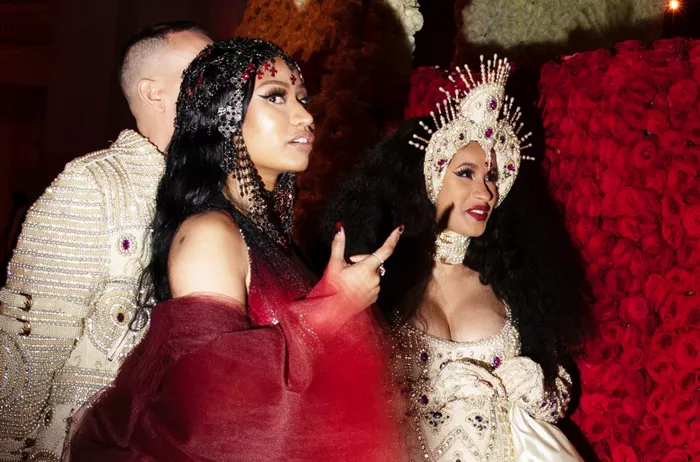In the vast landscape of music genres, few have had the transformative and enduring impact of rap. Emerging from the cultural crucible of the Bronx in the 1970s, rap has evolved into a global phenomenon, influencing not only music but also fashion, language, and societal norms. To truly appreciate the present and future of rap, it is essential to delve into its origins. This article seeks to unravel the intricacies of early rap, exploring its inception, key characteristics, pioneering artists, and iconic songs.
Understanding Rap Music
Rap, short for “rhythm and poetry,” is a genre that places a heavy emphasis on spoken words, rhythmic patterns, and lyrical dexterity. Born out of the African American and Latino communities in the Bronx, New York, rap music became a powerful medium for expression and storytelling. At its core, rap is a form of self-expression, allowing artists to convey their thoughts, experiences, and perspectives with unmatched intensity.
The musical foundation of rap typically revolves around beats, often borrowed from various genres such as funk, soul, and disco. These beats provide a rhythmic canvas upon which the rapper weaves their lyrical narrative. Rap’s distinctive characteristics include its use of rhyming couplets, wordplay, and the artful manipulation of language to convey a message or tell a story.
Understanding Early Rap
Early rap, often referred to as “Old School” rap, emerged during the late 1970s and early 1980s. This era marked the formative years of rap, characterized by its raw and unfiltered expression. Unlike the polished and commercialized rap of today, early rap was a grassroots movement, born on the streets and in the heart of urban communities.
One defining feature of early rap was its reliance on live performances and block parties. DJs played a pivotal role in the development of rap, extending and remixing instrumental breaks to create an electrifying atmosphere. These events provided a platform for emerging MCs (Master of Ceremonies) to showcase their lyrical prowess and engage with the audience.
Early Rappers: Pioneers of a Cultural Revolution
Grandmaster Flash and the Furious Five
No exploration of early rap is complete without acknowledging the contributions of Grandmaster Flash and the Furious Five. Hailing from the South Bronx, they are widely regarded as pioneers who helped shape the sound and style of early rap. Grandmaster Flash, known for his turntablism skills, introduced innovative techniques such as backspinning and phrasing, laying the groundwork for DJing in rap music.
Their seminal track “The Message” (1982) stands as a landmark in early rap, addressing social issues and urban realities. With its poignant lyrics and distinctive sound, the song transcended musical boundaries and became a cultural touchstone.
Run-D.M.C.
In the mid-1980s, Run-D.M.C. burst onto the scene, leaving an indelible mark on early rap. Comprising Joseph “Run” Simmons, Darryl “D.M.C.” McDaniels, and Jason “Jam Master Jay” Mizell, the group brought a new aesthetic to rap music. Their fusion of rap with rock elements, showcased in hits like “Rock Box” (1984) and the groundbreaking collaboration with Aerosmith on “Walk This Way” (1986), helped propel rap into the mainstream.
Run-D.M.C.’s impact extended beyond music, influencing fashion with their signature Adidas tracksuits and fedora hats. Their success paved the way for future rap artists to break into the mainstream.
LL Cool J
LL Cool J, an acronym for “Ladies Love Cool James,” emerged as one of the earliest solo rap stars. His debut album, “Radio” (1985), featured the iconic track “Rock the Bells,” showcasing LL Cool J’s charismatic delivery and lyrical prowess. He played a crucial role in establishing rap as a viable and respected genre, earning him the title of one of the “Kings of Rap.”
Iconic Songs that Shaped the Landscape
“Rapper’s Delight” – The Sugarhill Gang (1979)
Widely considered the first commercially successful rap song, “Rapper’s Delight” by The Sugarhill Gang laid the groundwork for the genre’s future. With its catchy beat and infectious rhymes, the song introduced rap to a broader audience and set the stage for the rise of hip-hop as a cultural force.
“Planet Rock” – Afrika Bambaataa & the Soulsonic Force (1982)
Produced by Afrika Bambaataa and the Soulsonic Force, “Planet Rock” is a groundbreaking track that merged rap with electronic and dance music elements. The song’s futuristic sound and innovative production techniques influenced the development of electronic dance music (EDM) and showcased the versatility of rap as a genre.
“Paid in Full” – Eric B. & Rakim (1987)
Eric B. & Rakim’s “Paid in Full” is a classic that exemplifies the evolution of rap in the mid-1980s. Rakim’s smooth and intricate flow, coupled with Eric B.’s masterful production, elevated the lyrical and sonic complexity of rap. “Paid in Full” remains a timeless piece that continues to inspire artists across genres.
See Also: Good Bass Rap Songs
Conclusion
Early rap laid the foundation for a cultural revolution that transcended musical boundaries. The pioneers of this era, through their innovation and resilience, paved the way for rap to become a global phenomenon. The raw and unapologetic nature of early rap continues to influence artists, and its impact on contemporary music is undeniable.
As we reflect on the roots of rap, it is essential to recognize the socio-cultural context from which it emerged. Early rap was a powerful form of expression for marginalized communities, providing a voice to those who had been silenced for too long. Today, as rap continues to evolve and diversify, it is crucial to appreciate the authenticity and creativity that characterized its humble beginnings.
In conclusion, early rap is not just a genre of music; it is a cultural movement that sparked a revolution. By understanding its roots, we gain a deeper appreciation for the artists who paved the way, the iconic songs that shaped the landscape, and the enduring legacy that continues to resonate in the beats and rhymes of contemporary rap.

